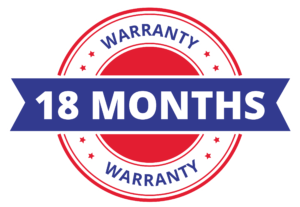Buying a car is a major financial commitment, and without proper budgeting, a car loan can become a financial burden. Whether you’re using traditional financing or Buy Here Pay Here (BHPH) financing, understanding how to budget effectively will help you stay on track and avoid unnecessary financial stress.
This guide covers how to budget for a car loan, including calculating your ideal payment, managing other car-related expenses, and staying financially secure while paying off your vehicle.
Step 1: Determine How Much You Can Afford
Before shopping for a car, set a realistic budget by calculating:
- Monthly car payment – Should be no more than 15% of your monthly take-home pay.
- Down payment – A larger down payment reduces the loan amount and monthly payment.
- Insurance costs – Factor in monthly premiums for full coverage or liability-only.
- Gas and maintenance – Budget for fuel, oil changes, and routine repairs.
Example Budget Calculation:
| Monthly Income | Recommended Car Payment (15%) | Estimated Insurance | Estimated Gas & Maintenance |
|---|---|---|---|
| $3,000 | $450 | $120 | $100 |
| $4,000 | $600 | $140 | $120 |
| $5,000 | $750 | $160 | $150 |
Pro Tip: Keep total car-related expenses under 20% of your monthly income to maintain financial flexibility.
Step 2: Choose the Right Loan Terms
Loan terms directly affect your monthly payment and total cost.
- Shorter loans (24-36 months) – Higher monthly payments but lower overall interest costs.
- Longer loans (60-72 months) – Lower monthly payments but higher interest paid over time.
Example Loan Cost Comparison:
| Loan Term | Loan Amount | Interest Rate | Monthly Payment | Total Interest Paid |
|---|---|---|---|---|
| 36 months | $12,000 | 10% | $387 | $1,932 |
| 60 months | $12,000 | 15% | $285 | $4,085 |
What to Do:
- Choose the shortest loan term you can afford to minimize interest costs.
- If choosing BHPH financing, ensure payments fit within your income.
Step 3: Understand Additional Costs of Car Ownership
Car payments aren’t the only cost—budget for:
- Insurance premiums – Full coverage is often required for financed cars.
- Fuel expenses – Gas prices fluctuate, so estimate based on your vehicle’s MPG.
- Routine maintenance – Includes oil changes, tire replacements, and brake inspections.
- Emergency repairs – Unexpected issues like a dead battery or alternator replacement.
Step 4: Avoid Common Budgeting Mistakes
1. Ignoring Total Loan Cost – Low monthly payments may cost more in interest over time.
2. Not Shopping for the Best Insurance Rate – Compare quotes before committing.
3. Buying a Car That’s Too Expensive – Just because you qualify for a loan doesn’t mean it fits your budget.
4. Forgetting Emergency Savings – Have a buffer in case of unexpected car repairs.
Step 5: Set Up an Automatic Payment Plan
Late payments can result in:
- Late fees and penalties.
- Damage to your credit score (if reported).
- Risk of repossession if payments are missed.
Set up automatic payments or reminders to stay on track.
Final Thoughts
Budgeting for a car loan is about understanding all costs, choosing the right loan, and ensuring your payments fit your income. A well-planned budget will help you own your car stress-free and avoid financial struggles.
If you’re looking for affordable car financing with flexible payment options, check out our Buy Here Pay Here dealership options today.









